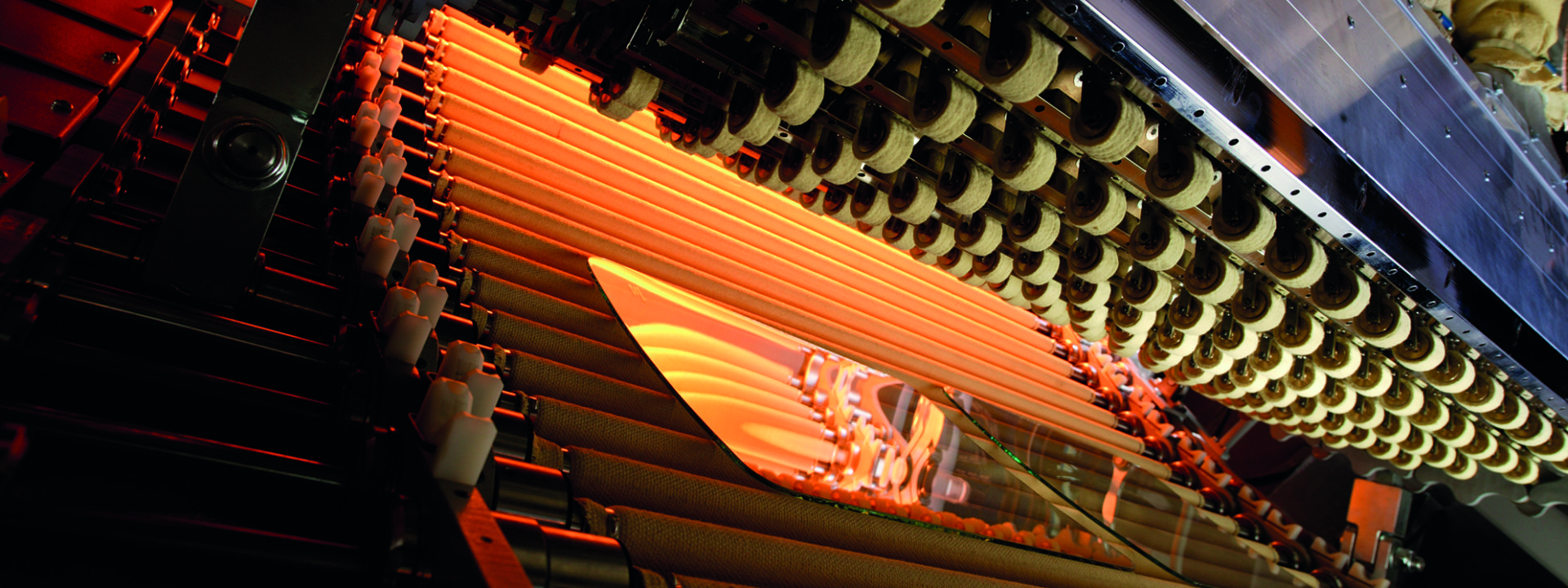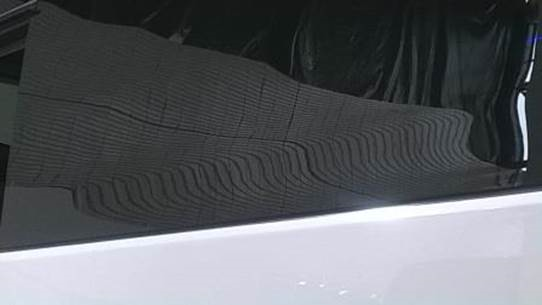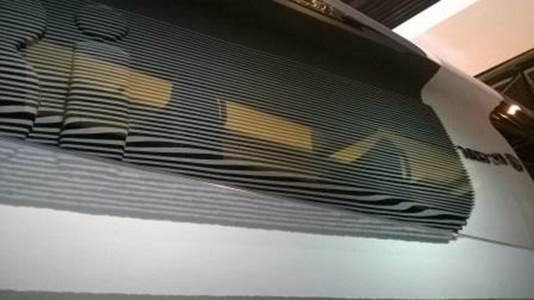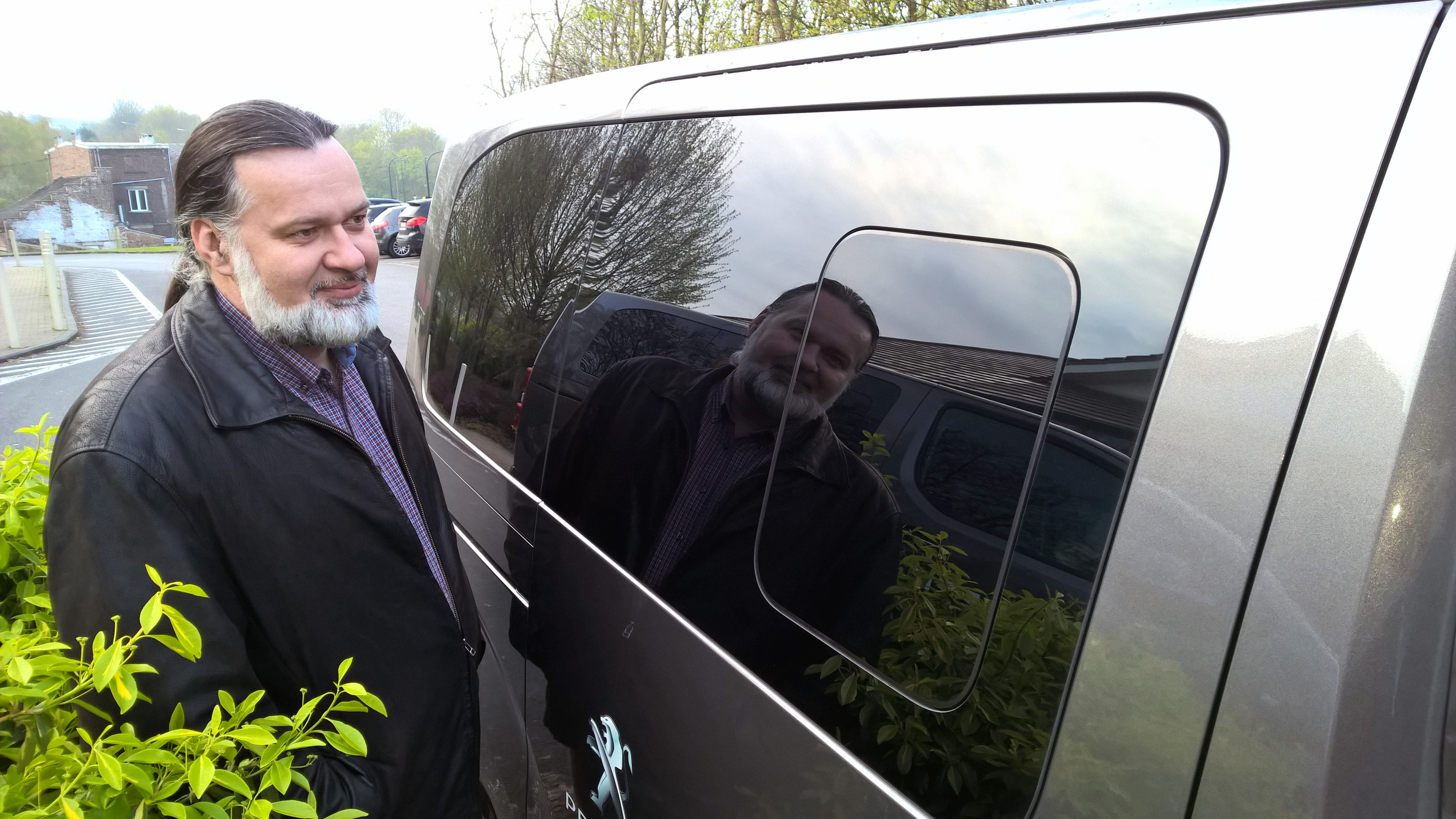
Electric buses, reduction of emissions, advanced safety systems and even autonomous vehicles were all popular topics at the Busworld exhibition this year in Brussels.
Save for a few new innovations, the glazing solutions on display were quite conservative. However, a range of integrated displays, laminated LED-based destination indicators and low-emissivity coatings capable of reducing heat gain were presented.
It was also surprising to see a considerable number of straight side windows still dominating at the event. Upper corners built up of two separate glass panes are not necessarily the most appealing visually. But according to the manufacturers, they are still the most cost-effective solution.
But is it so? And what other challenges do side window manufacturers face today?
Flat tempered glass is still widely used in city buses, whereas curved windows can be seen more often in coaches and intercity buses. As city bus fleets are large, and the number of new buses per order is quite high, cost is the decisive factor. And flat glass simply costs less than bent glass.
This is true. But bent glass offers other benefits, which makes it as good as or even better than flat glass.
For instance, bent glass is more rigid than flat glass. Therefore, it can also be thinner. Instead of using 5 mm, you could go down to 4 or even 3 mm, saving 100 or 200 kg in the weight of the vehicle and reducing emissions.
Another benefit would be the possibility of using IG in the side windows without increasing the weight of the vehicle too much. Replacing traditional monolithic windows with IG improves passenger comfort by reducing any heat gain in the summer and heat loss in the winter.
What’s more, fuel consumption goes down, thanks to the reduced need for AC and heating.

Process-wise, a bent tempered side window doesn’t differ that much from a flat tempered side window. It only takes replacing the traditional flat quench with a bending and tempering section followed by a cooling track. Depending on the configuration, the cycle time and capacity can remain the same.
Let’s have a look at the different bending processes available today:
The bending follows either when the glass is completely run on the bending section, a flexible process with oscillation that is also suitable for lower capacities, or during the transfer, which is a continuous process mainly used for high-capacity applications.
This LB process gives the best optics, as the glass is bent right after exiting the furnace. No overheating is needed. Therefore, this method also allows bending and tempering of 3-mm glass with good optical quality.
Additionally, due to the mounting direction of the glass pane in a bus, roller waves are invisible, as they are horizontal.
The LB process is basically suitable only for a constant radius. The bending section can be either fixed, with a long changeover for long series, or adjustable, with a short changeover that suits short series, as well.
This type of bending process is mostly used for constant radii. However, it can be also adjusted for irregular or varying radii as well, which is the main advantage of this method.
Bending can be performed only after the glass is run completely through the bending section. This, in turn, requires corresponding overheating to compensate for the cooling during the glass transfer and bending.
This adds waviness from the rollers, especially when processing thinner 3- and 4-mm glasses. Due to the installation direction of the window glass in a bus, the waves are vertical, and therefore, clearly visible to passengers and passers-by.
The mold-based method is generally used for complex bending, such as for backlites, but can be adjusted for regular and irregular radii as well. The bending can be performed only after the glass is run completely through the mold bending section. This process also requires overheating glass to compensate for the cooling during the glass transfer.
The mold-based system tends to have cross bending, which limits bending possibilities for smaller radii and smaller sizes.
Here again, due to glass overheating, the tendency to cross curvature, and in some cases, also the installation direction, the optical quality is compromised. This results in distortions visible to passengers.

Side window with optical distortions (Golden Dragon in Busworld, glass by Fuyao).

Optically flawless side window (Irizar in Busworld, glass by Vidurglass).
Whether flat or bent, new technologies and requirements are gaining ground for side windows. This is driven by global trends toward sustainability, lower emissions and lower fuel consumption.
Low-emissivity coatings are becoming increasingly popular for side windows due to their obvious advantages. By reducing heat gain, the AC system can be made smaller, which again means lower fuel consumption and fewer emissions. Additionally, this type of coating also increases passenger comfort.
Low-E coating, however, complicates the heating of the glass. While blocking solar radiation, it also blocks the heating radiation in the furnace. To overcome this problem, the use of convection becomes a necessity.
Most of the sidelites today have black printing around the edges. This black printing is also a big challenge for today’s tempering process. While the coating reflects the radiation, the black print absorbs the heat radiation. This places a high demand on the furnace and the chosen heating technology. For example, the use of convection is a must to overcome these challenges. And in the most difficult cases, a focused convection or heating in several steps – and in several furnace sections – must be considered.
Integrated vents, or so-called glass-in-glass applications, are nowadays quite usual. The glass-in-glass vent allows an economical solution for venting without using additional frameworks on the body. However, this configuration sets tight requirements for the heating as well as for the bending and limits the bending method to roller-based processes only.

Sliding glass vent observed by Service Engineer Mika Olan from Glaston
In northern countries, IG units used in side windows are already quite common. This sets tight requirements on the shape accuracy, production tolerances and process repeatability.
Whereas manufacturers with old technology are forced to cope with tighter tolerance by accepting a lower yield, frontrunners invest continuously in automation and new technologies and keep a competitive edge by maximizing the process yield.
Automation is key to achieve the tolerances required for IG production. Heating, bending and cooling all have significant effects on the shape, and therefore, the whole process must be well controlled. Automation plays a significant role in maintaining the process conditions to be as stable as possible.
Automatic heat profiling, automatic roller heat control and automatic blower power adjustment to eliminate the negative effect of the changing ambient temperature are just few examples where automation is adds value to glass bending.
Sign up for Glastory newsletter
We answer your questions about glass processing. Let us know your challenges and we promise to do our best to help you.
What is IG?
IG is an insulating glass, a window with several panes, like double or triple glazing. Several panes are used to increase the insulation of window.